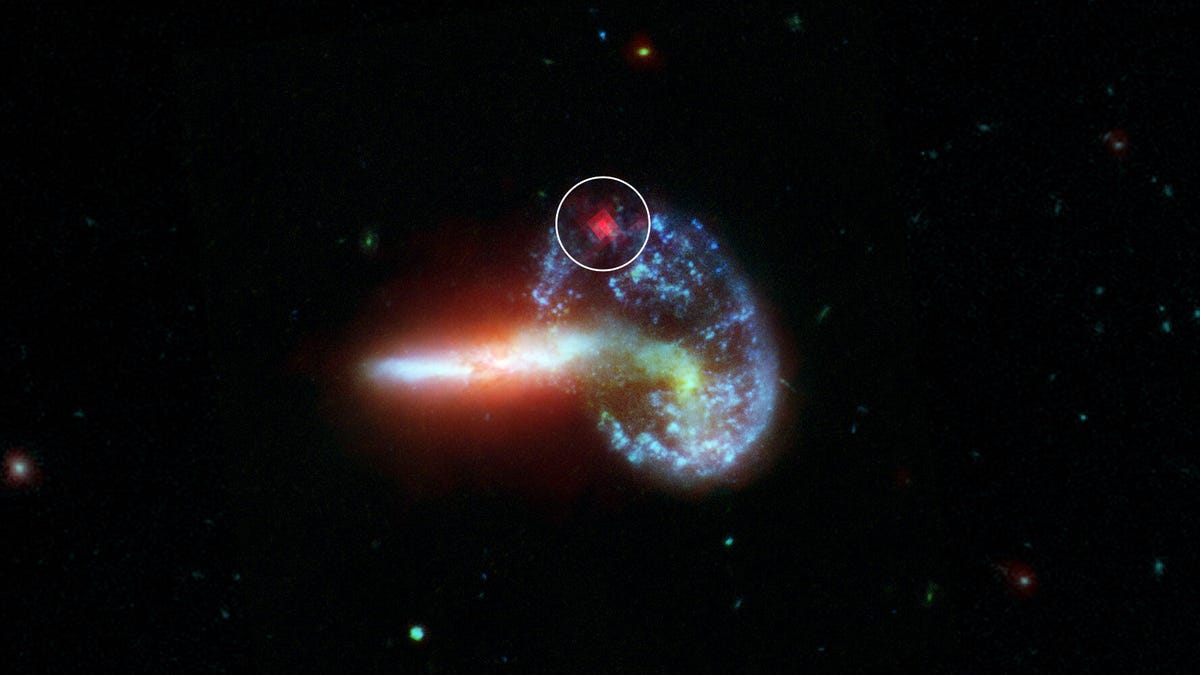Scientists solve mystery of missing supernovas
Turns out exploding stars can be pretty sneaky.
It's been a celestial game of hide and seek.
Scientists have made predictions about how many supernovas, or exploding stars, should be out there, but our optical telescopes (like the Hubble Space Telescope) aren't seeing as many supernovas in the distant universe as would be expected. A study published in Monthly Notices of the Royal Astronomical Society offers an explanation for this discrepancy, and it has to do with dust.
A supernova tends to be a big, bright, blustery affair that often occurs at the end of a star's lifetime. Data from NASA's retired Spitzer Space Telescope helped researchers spot five previously unknown supernovas lurking in dusty galaxies.
Spitzer saw the universe in infrared light, which allowed it to see through clouds of dust that obscured the view for optical telescopes.
"These results with Spitzer show that the optical surveys we've long relied on for detecting supernovas miss up to half of the stellar explosions happening out there in the universe," lead author Ori Fox said in a NASA statement on Wednesday. "It's very good news that the number of supernovae we're seeing with Spitzer is statistically consistent with theoretical predictions."
The exploding stars found in the Spitzer study all met similar ends. "As they grow old and their cores fill with iron, the big stars can no longer produce enough energy to withstand their own gravity, and their cores collapse, suddenly and catastrophically," NASA said. The space agency described the stars' end games as "blowing themselves to smithereens."
The discovery of hidden supernovas will give the next generation of infrared space telescopes -- like the upcoming James Webb -- something to look for as they scan the universe. NASA retired Spitzer in early 2020 after almost 17 years of work.
Supernovas represent the deaths of stars, but they can help scientists understand star births. "If you have a handle on how many stars are forming, then you can predict how many stars will explode," Fox said. "Or, vice versa, if you have a handle on how many stars are exploding, you can predict how many stars are forming. Understanding that relationship is critical for many areas of study in astrophysics."
Follow CNET's 2021 Space Calendar to stay up to date with all the latest space news this year. You can even add it to your own Google Calendar.


